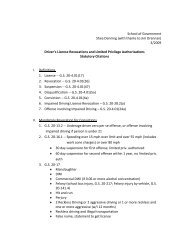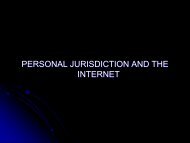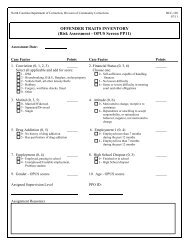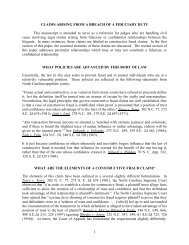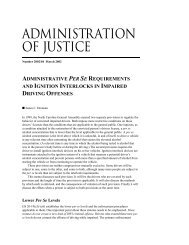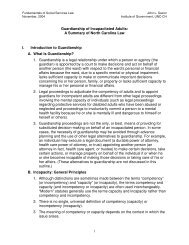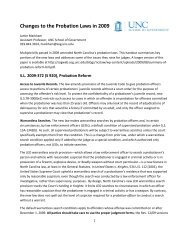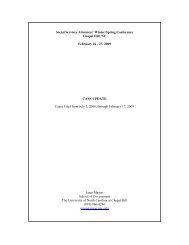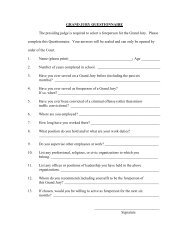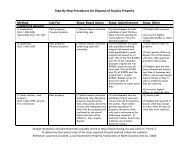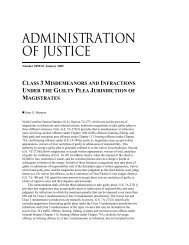Covenants Not to Compete (TROs and Preliminary Injunctions
Covenants Not to Compete (TROs and Preliminary Injunctions
Covenants Not to Compete (TROs and Preliminary Injunctions
You also want an ePaper? Increase the reach of your titles
YUMPU automatically turns print PDFs into web optimized ePapers that Google loves.
B. <strong>Preliminary</strong> <strong>Injunctions</strong>.<br />
Purpose: Preserve the status quo until a trial on the merits. See Lambe v. Smith, 11<br />
N.C. App. 580, 582, 181 S.E.2d 783,784 (1971).<br />
Burden of proof: At hearing on preliminary injunction, the party who obtained the TRO<br />
must go forward with request for preliminary injunction, or court must dissolve the TRO.<br />
Rule 65(b). See Pruitt v. Williams, 288 N.C. 368, 218 S.E.2d 348 (1975).<br />
<strong>Not</strong>ice <strong>to</strong> adverse party. No preliminary injunction shall be issued without notice <strong>to</strong> the<br />
adverse party. Rule 65(a). “<strong>Not</strong>ice” is not defined. However, a preliminary injunction<br />
can only be issued after notice <strong>and</strong> a hearing, which affords the adverse party an<br />
opportunity <strong>to</strong> present evidence in his behalf. Lambe v. Smith, 11 N.C. App. 580, 181<br />
S.E.2d 783 (1971). A preliminary injunction entered without notice affects a “substantial<br />
right” <strong>and</strong> is immediately appealable. See Perry v. Baxley Development, Inc. 188 N.C.<br />
App. 158, 655 S.E.2d 460 (2008).<br />
Interaction with Rule 6(d). Rule 6(d) requires 5 days notice before hearing on a<br />
motion. Also requires that affidavits be served with the motion. Formal compliance with<br />
6(d) may not be necessary if opposing party has adequate notice <strong>to</strong> allow preparation of<br />
a defense.<br />
Grounds for granting motion for preliminary injunction.<br />
1. A preliminary injunction is an extraordinary measure taken by a court <strong>to</strong> preserve<br />
the status quo of the parties during litigation. It will be issued only (1) If plaintiff is<br />
able <strong>to</strong> show the likelihood of success on the merits of his case <strong>and</strong> (2) if plaintiff<br />
is likely <strong>to</strong> sustain irreparable loss unless the injunction is issued, or if, in the<br />
opinion of the court, issuance is necessary for the protection of plaintiff’s rights<br />
during the course of litigation. See A.E.P. Indus., Inc. v. McClure, 308 N.C. 393,<br />
302 S.E.2d 754 (1983); Waff Bros., Inc. v. Bank, 289 N.C. 198, 221 S.E. 2d 273<br />
Triangle Leasing Company, Inc. v. McMahon,327 N.C. 224, 393 S.E.2d 854<br />
(1990).<br />
2. To establish a likelihood of success on the merits, the employer must make a<br />
prima facie showing that the covenant is valid <strong>and</strong> enforceable against the<br />
employee. NovaCare Orthotics & Prosthetics East, Inc. v. Speelman, 137 N.C.<br />
App. 471, 528 S.E.2d 918 (2000).<br />
3



